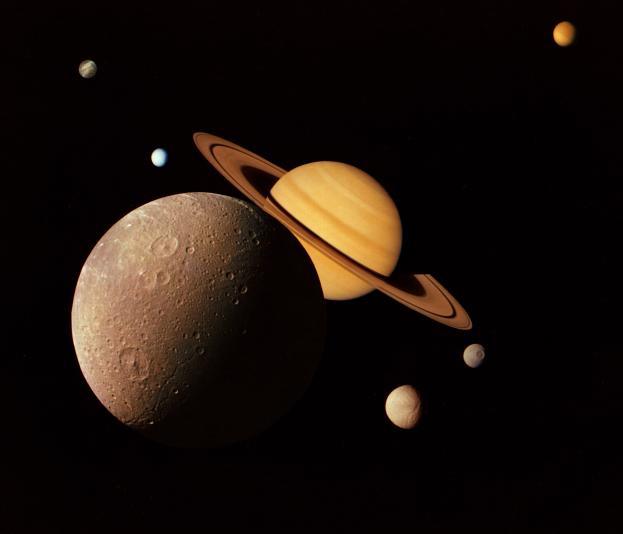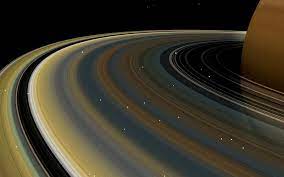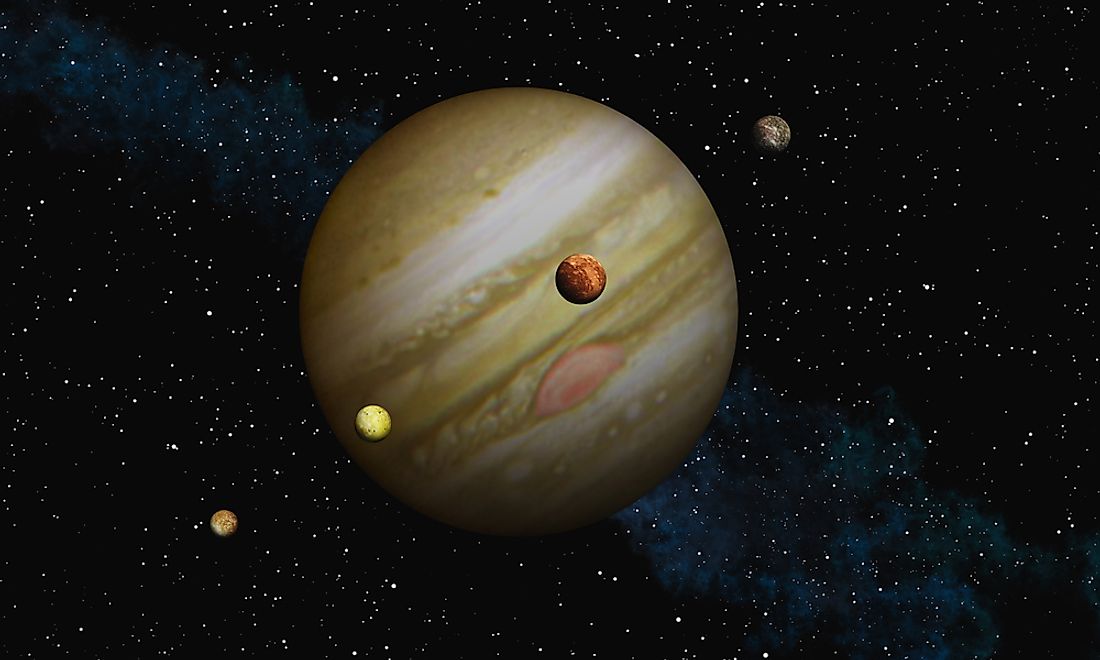Jupiter means:
Jupiter, known as Zeus in Greek mythology, over threw his father Saturn to become king of the gods. He then split the universe with his brothers Neptune and Pluto.
How much would you weigh on Jupiter?
If you traveled to Jupiter on vacation, you would be very heavy. If you weigh 70 pounds (32 kg) on Earth, on Jupiter you would weigh 185 pounds (84 kg). This is because Jupiter is such a large planet and so has more gravity.
The Planet
Jupiter is by far the largest planet in our Solar System. The Earth could fit inside Jupiter more than 1000 times.
Jupiter is a very stormy planet. There are storms found throughout the atmosphere, and most of the storms seem to never end. The many different cloud formations and storms in the atmosphere also make Jupiter a very colorful planet.
Jupiter’s great red spot, visible in the picture above to the right, is where a giant storm has been raging for at least 300 years. This red spot is also called “The Eye of Jupiter” because of its shape. This storm’s super hurricane winds blow across an area larger than the Earth.
Jupiter is considered a gas giant because it does not have a solid surface. Under its atmosphere is a large liquid ocean of hydrogen and water. What lies in between that ocean and the atmosphere? Actually, there is no in between. The atmosphere slowly gets thicker and thicker until it becomes part of the ocean. In other words, Jupiter’s ocean has no surface on which you could float a boat. The sky becomes the ocean.
Rings
Did you know Jupiter has rings? They are faint and are only able to be viewed when Jupiter passes in front of the Sun. This is because the light from the Sun lights them up for us to see here on Earth. There are three rings in all. They are named Gossamer, Main and Halo.
Moons:
Jupiter has 50 official moons and 12 provisional (unofficial) moons. The four largest and most well-known were discovered by Galileo in the year 1610. Their names are Io, Europa, Ganymede and Callisto. Some of the other moons are Adrastea, Ananke, Carme, Elara, Himalia, Leda, Lysithea, Metis, Pasiphae, Sinope, and Thebe.






